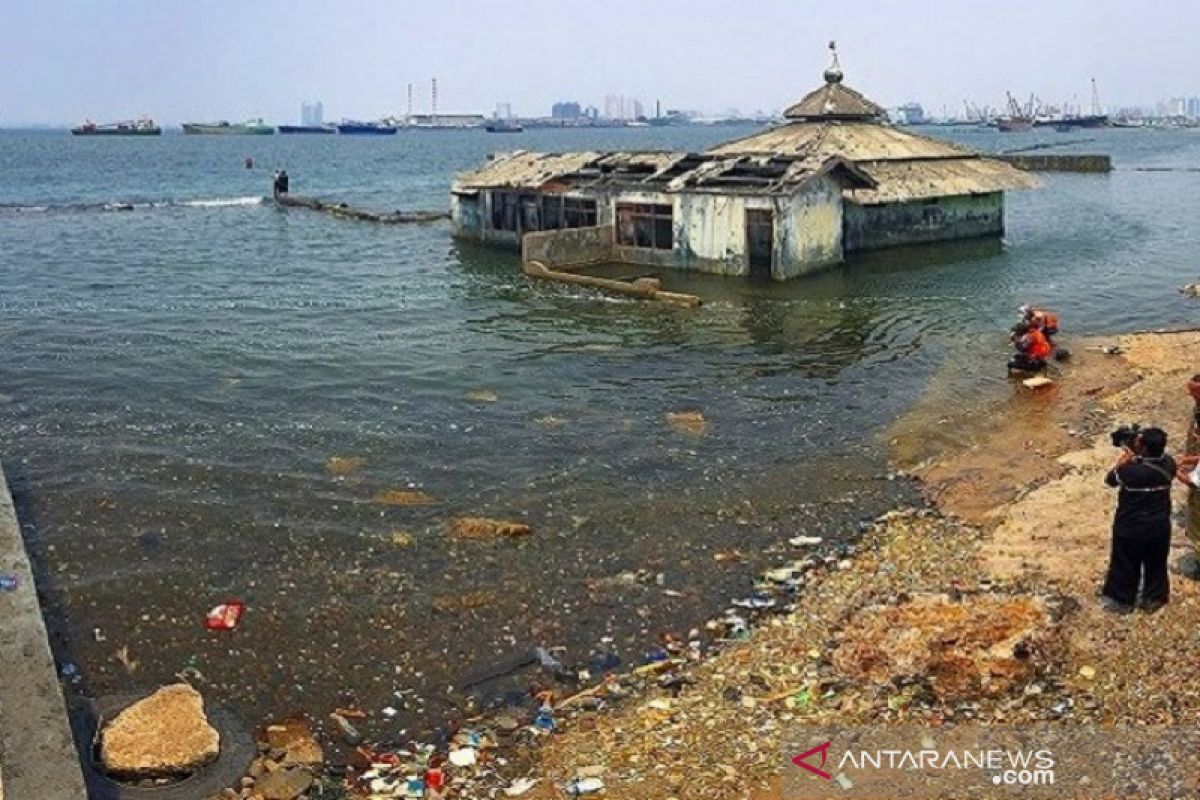Locals pile up the debris and some other materials to build a road of height 1.5 to two meters.
"Several houses around were elevated to prevent water flooding. The road was already built in concrete earlier, but we piled it up to make it higher. It is something that we could not help," Maya, a local resident, stated.
Her house has been elevated twice since 2002, so it still appears normal as compared to other houses in the neighborhood, which are more or less only a meter in height when viewed from the road surface.
Every time the sea level rises, tidal flooding will trigger inundation. This occurs on a regular basis, at least for Maya and some hundreds of people living there.
The area has been named "Empang", which means "pond" in Indonesian, for obvious reasons since it was based on its real situation back then when the sea water of Jakarta Bay had stagnated.
However, the people have unwittingly adapted to the surrounding conditions. The first time they occupied the area, they had built stilt houses. It was later when they used a mixture of soil, clamshell, and building debris to develop permanent or semi-permanent houses.
The people of Muara Angke have to adapt more and in a tougher way to tackle their current problem. However, the locals of Muara Karang, who also suffered in a similar manner, do not view tidal flooding as a routine problem anymore since they have built a pumping house
"It was not an immediate process. In 1996, we formed a team that was in charge of dredging mud over the drainage area. At that time, we had to borrow a pump from the environmental affairs office of Pluit," Eva Martam, one of the initiators of the Muara Karang pumping house, stated.
Martam and the team collected money amounting to Rp200 thousand (around US$14.5) per household to replicate a pumping house to prevent their neighborhood from getting inundated during heavy rainfall or tidal flood.
In 1997, a pumping house facility, equipped with ten pipes, was successfully built in Muara Karang, with approval of the local government and financial support from its people and other donors.
Since then until this day, the pumping system could drain water from a three-meter-deep water tunnel to the ocean.
This collective effort yielded positive results. Flood-prone areas of Blok 2 and Blok 3 of Muara Karang had last experienced massive flooding in 2002, and it was since the pumping house was inactive.
The facility is now still in good condition, with the locals paying some Rp25 thousand (around US$1.8) per month for its operational cost.
Muara Angke and Muara Karang facing similar problems of land subsidence, flooding, as well as tidal flood are linked to the issue of climate change that has led to the projection of Jakarta being submerged by 2050.
Land subsidence in this capital was recorded at around 17 cm annually along with sea level rising 0.44 cm per year. In this current scenario, what worst could happen to Jakarta in 30 years ahead?
However, the entire issue could not be solved by only the residents' efforts. It more likely calls for some serious measures and policies by the government for all the stakeholders involved.
"Jakarta has already prepared an action plan of climate change adaptation, detailing how we should adapt to the situation," Gusti Ayu Ketut Surtiyati, a researcher at the Indonesian Institute of Sciences (LIPI), noted.
As a measure to minimize the disaster hazard, Jakarta maintains updated documents of disaster contingency plans. This city's Medium Term Development Plan (RPJMD) takes into account the flood as a threat.
Back then in 2017, the World Bank had also undertaken a program on Jakarta's reservoir normalization, including relocating the stream.
"Yet why does Jakarta still experience flooding?" Ayu questioned.
According to research conducted by LIPI, in which Ayu was involved, the locals and government in flood-prone areas in the north coast of Jakarta are separately creating their own version of climate resilience.
The locals' perception on several developments of adaptation as well as mitigation system conducted by the government demonstrates that most of them do not even have an understanding of it.
"The government programs are viewed as not being for them, so they passionately prepare and conduct their own strategies, while the government does the same thing. The region's developer does it as well," Ayu stated, citing her research that was conducted in 2015, 2016, and 2017.
Ayu underscored the comprehensive strategy of the locals along with the government. She suggested that there is "no other way than" the government involving the people directly for every single effort of mitigation and adaptation against climate change.
Related news: Flooding hits some 100 homes in East Jakarta's Cawang
Related news: Police interrogate five workers over land subsidence on Gubeng highway
Related news: Police prepare personnel to tackle floods in Jakarta
Editor: Sri Haryati
Copyright © ANTARA 2020












